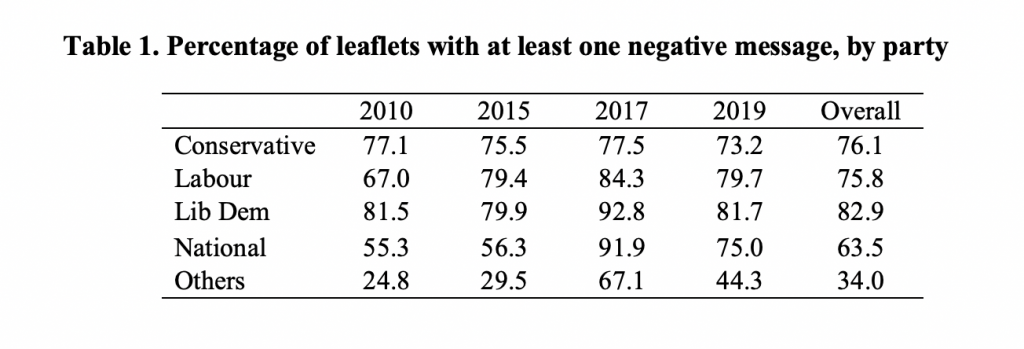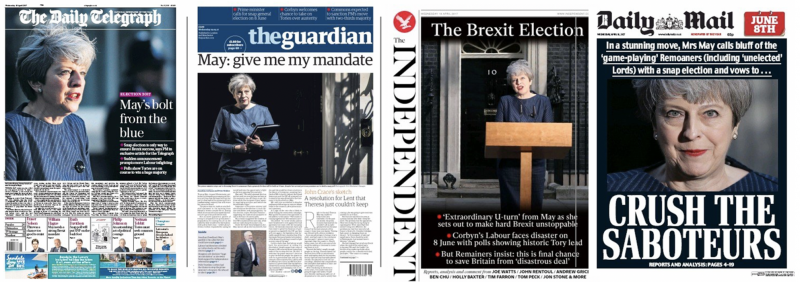

 Election leaflets play a central role in general election campaigns. They provide prospective voters with important information ahead of elections and tell them what political parties – and their candidates – stand for. However, as campaigns increasingly tailor their messages to specific voters in specific constituencies, it is difficult to get a broader sense of what campaigns are talking about across the country. Caitlin Milazzo, Siim Trumm, and Joshua Townsley introduce the OpenElections project, which aims to rectify this by providing an online platform for voters to track and analyse the content of British election leaflets.
Election leaflets play a central role in general election campaigns. They provide prospective voters with important information ahead of elections and tell them what political parties – and their candidates – stand for. However, as campaigns increasingly tailor their messages to specific voters in specific constituencies, it is difficult to get a broader sense of what campaigns are talking about across the country. Caitlin Milazzo, Siim Trumm, and Joshua Townsley introduce the OpenElections project, which aims to rectify this by providing an online platform for voters to track and analyse the content of British election leaflets.
Parties spend more money on leaflets than on any other campaign activity. According to the Electoral Commission, parties spent over £13 million on ‘unsolicited material to electors’ during the 2017 general election campaign – more than they spent on any other type of activity. Despite the increasing focus on social media, leaflets remain the most common type of contact voters have with political candidates at election time. According to British Election Study data, around half of voters reported being contacted by a party in the final weeks of the 2019 general election campaign. Of these, 88% indicated they had received a leaflet or letter from at least one party.
Leaflets serve a purpose for candidates and voters alike. They can provide prospective voters information about the candidate or party and their position on a range of issues. They can also attack opponents and their policy positions, or use previous results and opinion polls to encourage tactical voting. However, while leaflets are ubiquitous, parties increasingly target their electoral communications in particular seats that will decide the election outcome, and at specific voters in those seats. The result is that most voters do not know what parties and candidates are talking about elsewhere. Similarly, researchers have to rely on alternative approaches to studying campaign communications from constituency to constituency as candidates are not legally required to report the content of their election communications.
The OpenElections project aims to increase the transparency of British general elections by allowing citizens and researchers to analyse what political parties and candidates across the country talk about in their election leaflets. Users can explore the crowdsourced database of over 8,000 leaflets on the website, filtering by party, election year, constituency, and a variety of issue mentions. Leveraging citizen science, users will also be able to upload new leaflets and use the website’s easy-to-use coding tool to identify messages and issues in new leaflets that are uploaded.
Gathering data on leaflets from a large number of constituencies would be difficult without the resources of Democracy Club’s crowdsourced record-keeping website electionleaflets.org, which encourages users to photograph or scan the leaflets they receive and upload them to an online repository. Building on Democracy Club’s excellent work, the OpenElections dataset codes leaflets on eight policy dimensions: the economy, immigration, health, education, environment, social welfare, governance, and Brexit/Europe. In addition, leaflets are identified based on whether they: i) discuss or feature an image of the candidate and/or party leader, ii) talk about the tactical situation in the constituency, and iii) criticise an opposing party or candidate. The resulting dataset covers the last four general elections and almost every constituency, making it the largest collection of British election communications in existence. The website provides valuable data for voters, academics, and journalists alike to dissect.
Negative campaigning
The leaflet data can be used to, among other things, analyse negative campaigning in election leaflets. Users can filter election leaflets by whether or not they mention another party, leader, or candidate. The data can also be used to track the prevalence of negative messages over time. Figure 1 shows the percentage of coded leaflets at each general election that contain at least one reference to another party, candidate, or leader. Clearly, most leaflets in our dataset contain negative messages – though there is little evidence that this is increasing over time.
We can also find out which party is most negative. Table 1 shows the percentage of leaflets in the dataset distributed by each party that include at least one negative message. Negative messages tend to be more common for the Conservatives, Labour, and Liberal Democrats. Meanwhile, leaflets delivered by national parties tend to contain fewer mentions of their opponents. In sum, negative messages are – and always have been – common, particularly in leaflets distributed by the three main parties.
 Caution is advised when drawing conclusions about all leaflets distributed ahead of election day based on the leaflets uploaded to OpenElections. While the website hosts over 8,000 leaflets, they are self-reported and not a random sample of the total population of leaflets. That said, the number of leaflets from each party in each constituency correlates significantly with self-reported voter contact in the British Election Study, suggesting the sample is not substantially skewed towards or against any party or region. The importance of election leaflets as the most common point of interaction between voters and candidates means that our website can provide valuable insights for voters, academics, and journalists.
Caution is advised when drawing conclusions about all leaflets distributed ahead of election day based on the leaflets uploaded to OpenElections. While the website hosts over 8,000 leaflets, they are self-reported and not a random sample of the total population of leaflets. That said, the number of leaflets from each party in each constituency correlates significantly with self-reported voter contact in the British Election Study, suggesting the sample is not substantially skewed towards or against any party or region. The importance of election leaflets as the most common point of interaction between voters and candidates means that our website can provide valuable insights for voters, academics, and journalists.
_________________________
You can find the OpenElections website here and on Twitter @OpenElectionsUK.
 Caitlin Milazzo is Professor of Politics at the University of Nottingham. Her areas of research include electoral behaviour, British politics, and political campaigning.
Caitlin Milazzo is Professor of Politics at the University of Nottingham. Her areas of research include electoral behaviour, British politics, and political campaigning.
 Siim Trumm is Associate Professor at the University of Nottingham. His areas of research include British politics, parliamentary representation, and electoral campaigns.
Siim Trumm is Associate Professor at the University of Nottingham. His areas of research include British politics, parliamentary representation, and electoral campaigns.
 Joshua Townsley is a Research Fellow at the University of Nottingham. He researches electoral campaigns and political behaviour.
Joshua Townsley is a Research Fellow at the University of Nottingham. He researches electoral campaigns and political behaviour.







